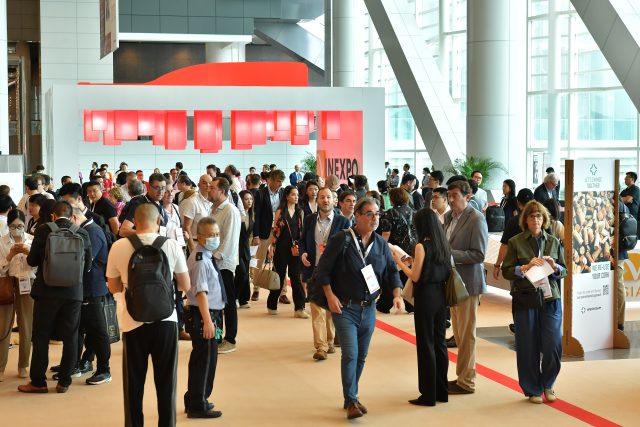Vinexpo Asia visitorship reveals trend towards ‘continentalisation’
Visitor numbers held strong at Vinexpo Asia this year, despite the event’s six-year hiatus from Hong Kong. But what do the three-day fair’s visitors reveal about how attendance to international events is changing in a post-Covid world?

Vinexpo Asia 2024 took place on 28-30 May, hosting 1,032 producers from 35 countries. A third of exhibitors were from France, reflecting the importance of French wines in Asian markets.
The Australian wine industry also made a significant showing with 85 wineries, celebrating China’s lifting of retaliatory tariffs. Other top exhibitor destinations represented at the show included Italy, Spain, Chile and China.
Visitor numbers outstripped the show organisers’ expectations, and the three-day fair welcomed a total of 14,203 visitors hailing from 60 countries.
Visitors to the show were predominantly from Mainland China, Hong Kong, Macau, and Taiwan. These four markets represented 75% of the attendees this year, a fact which the Vinexpo Asia organisers believe reflects a significant shift in attendance at international trade events.
Rodolphe Lameyse, Vinexposium group’s CEO, has coined the term “continentalisation” — arguing that visitors are now most likely to attend trade shows within their immediate region.
Since its inaugural edition in 1998, Hong Kong has been the key hub for Vinexpo Asia. However, following the Covid-19 pandemic, the event’s organisers decided to expand the exhibition, which is now presented on alternate years between Hong Kong and Singapore.
Partner Content
Lameyse explained that while Singapore is perfectly located to cater to the Southeast Asian market, Hong Kong “is definitely the right place to address the Chinese market”.
“It’s not one or the other, it’s one and the other,” he said during the exhibition. Last year, the first iteration of the event hosted in Singapore saw 80% of visitors from Southeast Asia.
Lameyse said catering to this increasingly important wine market was a no-brainer. “It’s simple. During the last six years the rise of the population interested in wine in Southeast Asia has been drastic, driven by the young population, increase of the middle class, and an appetite for Western styles of wine.”
He added: “When we are facing challenges of climate change [and] wine consumption decline, having a new market means a lot of opportunities.”
On the other hand, he explained that Vinexpo Asia in Hong Kong is mainly focused on Mainland China and the surrounding areas, as reflected by this year’s visitorship. “We are very happy with this strategic decision,” Lameyse said.
At the exhibition, Vinexpo Asia’s business matching service facilitated deals between buyers and exhibitors through the online platform, with 4,237 pre-booked meetings.
The next Vinexpo Asia will be held in Singapore on 27-29 May 2025.
Related news
Carlsberg Hong Kong expands no and low alcohol portfolio
Diageo sells East African Breweries stake to Asahi for US$2.3bn
Treasury Wine Estates plans leaner future amid US and China slowdown




